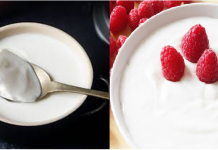
High-Intensity Interval Training (HIIT) is a more intense form of interval training which involves alternate periods of quick, short bursts of anaerobic exercises followed by recovery periods of low- intensity aerobics. The trainee usually starts with warm- up exercises, followed by repetitive sets of high- intensity workouts, each separated by periods of low to moderate intensity, and finally ending with a cooling period of very low density. An HIIT session may last 5 – 30 minutes, depending on the type of exercise. The number of repetitions and the length of each also vary and may be as little as three repetitions with 20seconds of intense exercise.
Continuous Endurance Training involves aerobic exercising at a steady pace. Exercising at a lower intensity increases the duration of the workout and, hence, improves the capacity for endurance. The intensity and duration again depend on the type of exercise. For instance, a jogger and ultra distance runner running at 50 – 60% of maximum heart rate, or 20 – 36% of maximal oxygen consumption (VO2 Max), can run for 60minutes at an easy pace; whereas a marathon runner running at 70 – 80% maximum heart rate, or 52 – 68% VO2 Max, at a faster pace, can endure for 30 – 45minutes.
Intensity vs. Continuity #1:
Cardiovascular Benefits

Research shows that 4 repetitions of 4minute run at 90 – 95% maximum heart rate, each followed by a 3minute recovery period at 70% maximum heart rate performed 3 days per week for a duration of 8 weeks resulted in 10% greater improvement in stroke volume (the amount of blood pumped per beat) than did long, slow training for the same duration of time.
When cardiovascular functions improve, VO2 Max also increases. Between people who participate in an 8week HIIT and those who do in 8week continuous endurance training, the VO2 Max was found to increase higher in those in the HIIT program (15%) than the ones in the continuous endurance program (9%).
Intensity vs. Continuity #2:
Skeletal- Muscular Benefits
Initially, scientists believed the increase in mitochondria (energy factor of a cell) density to have come only from continuous endurance exercise. However, research findings show a similar increase in mitochondrial density in people who performed four to six 30second HIIT 3 days per week, and those who performed 45 – 60 minutes of steady workout at 65% VO2 5 days per week. The former group with the higher levels of mitochondrial enzymes are benefited with improved skeletal- muscle metabolic function.
Intensity vs. Continuity #3:
Metabolic Benefits
The increase in mitochondrial density is also seen as a metabolic adaptation. Fat oxidation is significantly higher and carbohydrate oxidation is significantly lower after 6 weeks of interval training.
Excess Post- exercise Oxygen Consumption (EPOC) is another metabolic benefit of HIIT. Oxygen consumption remains elevated as the working muscles restore physiological and metabolic factors in the cells to pre- exercise levels. As compared to endurance training, there is higher and longer calorie burning after exercise.

At The Crossroad
Improving cardiovascular, skeletal- muscular and metabolic functions of the body are the main goals of aerobic exercises and, for years, continuous endurance training has been the chosen method to achieve these goals. But people are now realizing that HIIT leads to similar, and sometimes better even, results in less time. Those looking to achieve physiological gains faster are beginning to develop a new- found craze for HIIT. It is especially popular with athletes because research has shown that it boosts athletic performance and improves the health of recreational athletes. Besides, it provides the same benefits of continuous aerobics, but in less time.
However, unless you’re a pro athlete, trainer or coach, or have a competitive spirit, you will find it difficult to keep up with the physical demands of HIIT. You may even risk an injury which does not happen in slow and steady cardio workouts. The ideal approach would be to create a balance by incorporating both HIIT and Continuous Endurance Training into your workout schedule. Of course, depending on your workout, you might not need both. Choosing the right path is crucial and it is not that simple a thing to do; which is why you need the counsel of fitness experts whose services you’ll find readily available through Gympik.com.


 Traqade
Traqade































